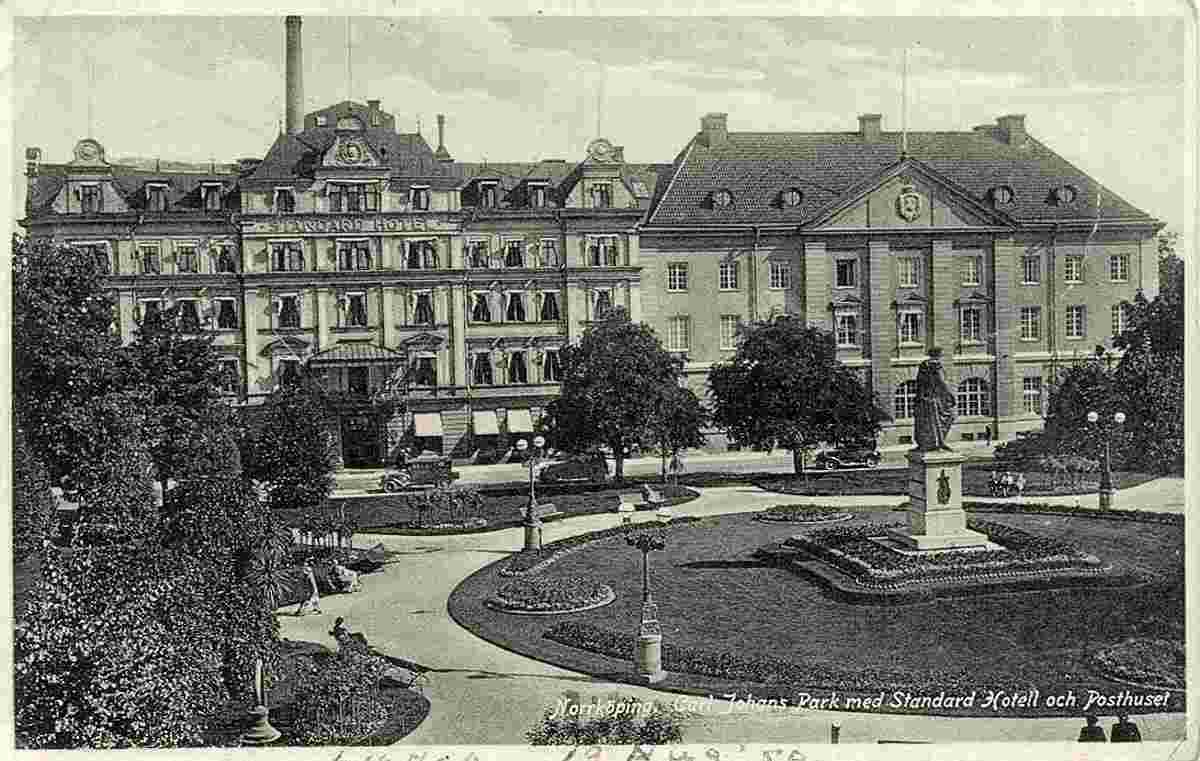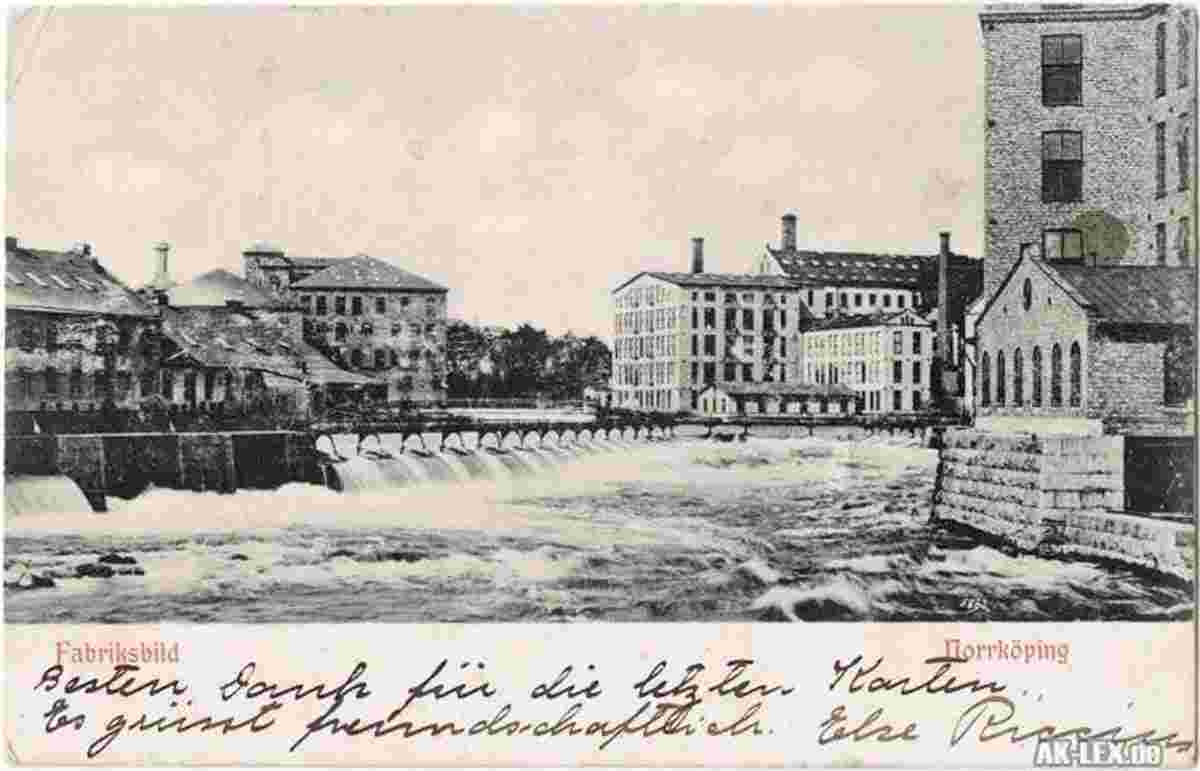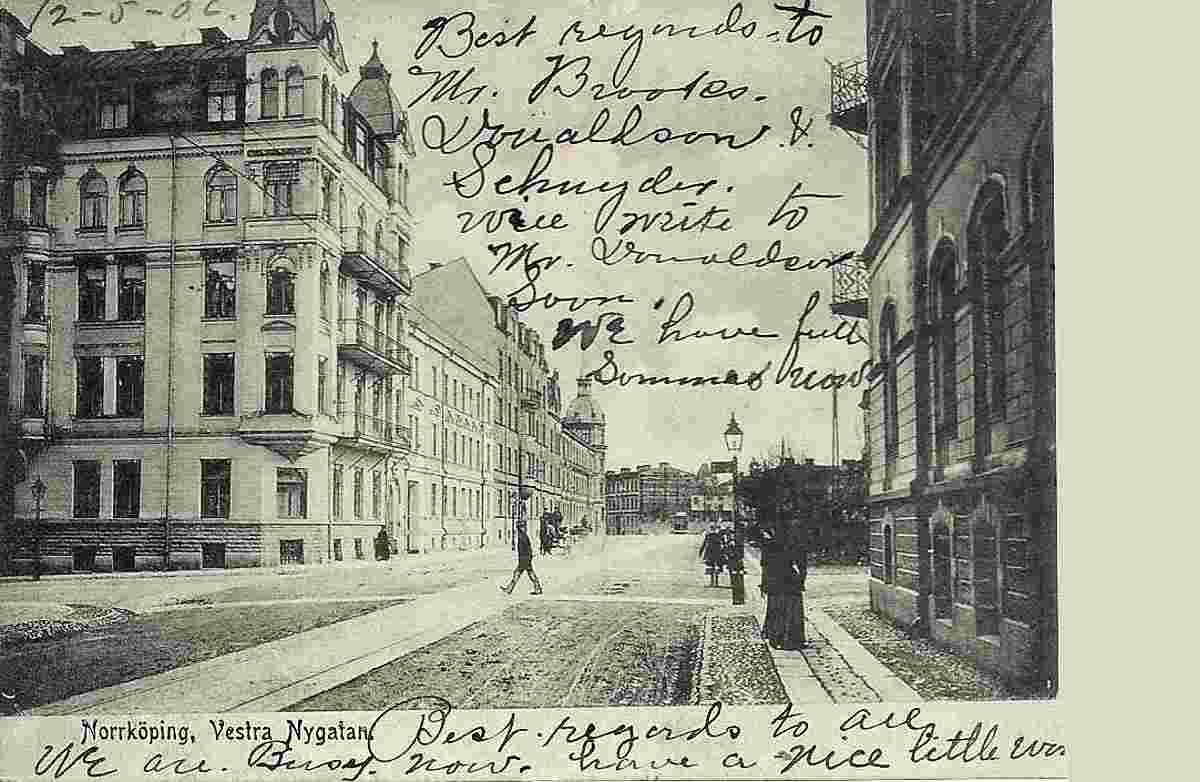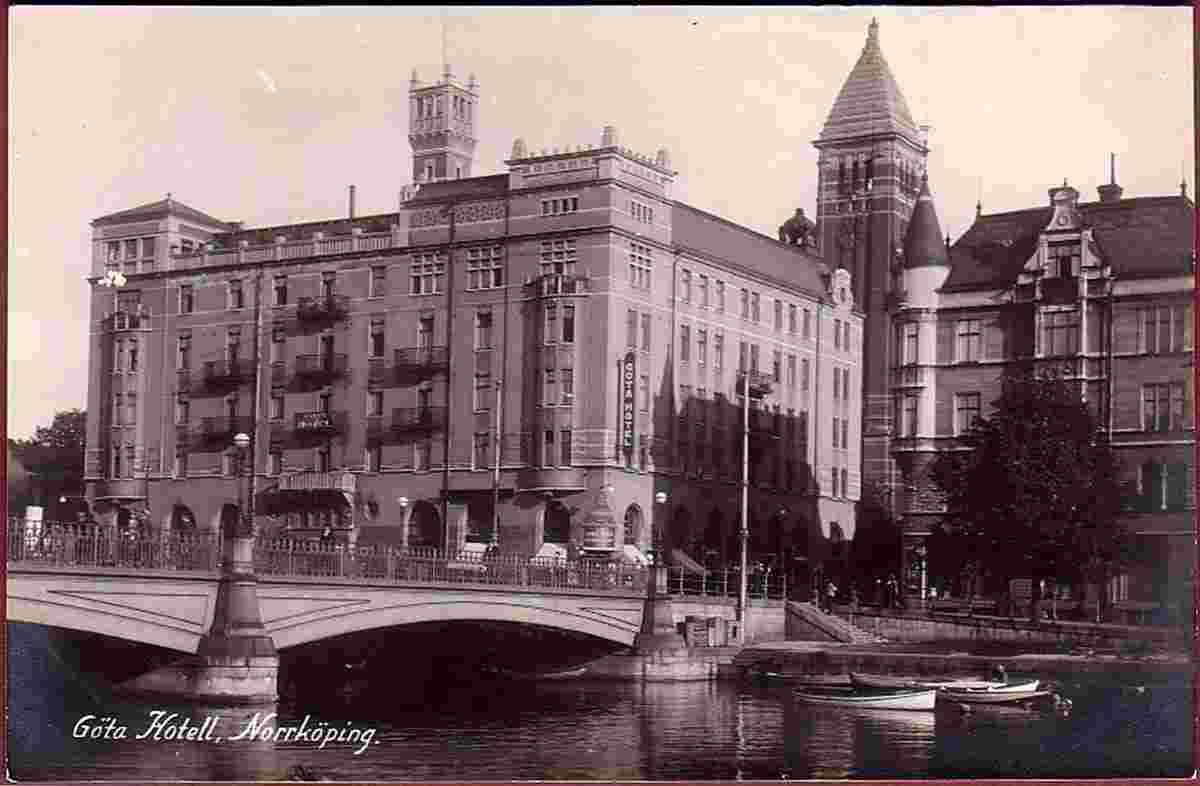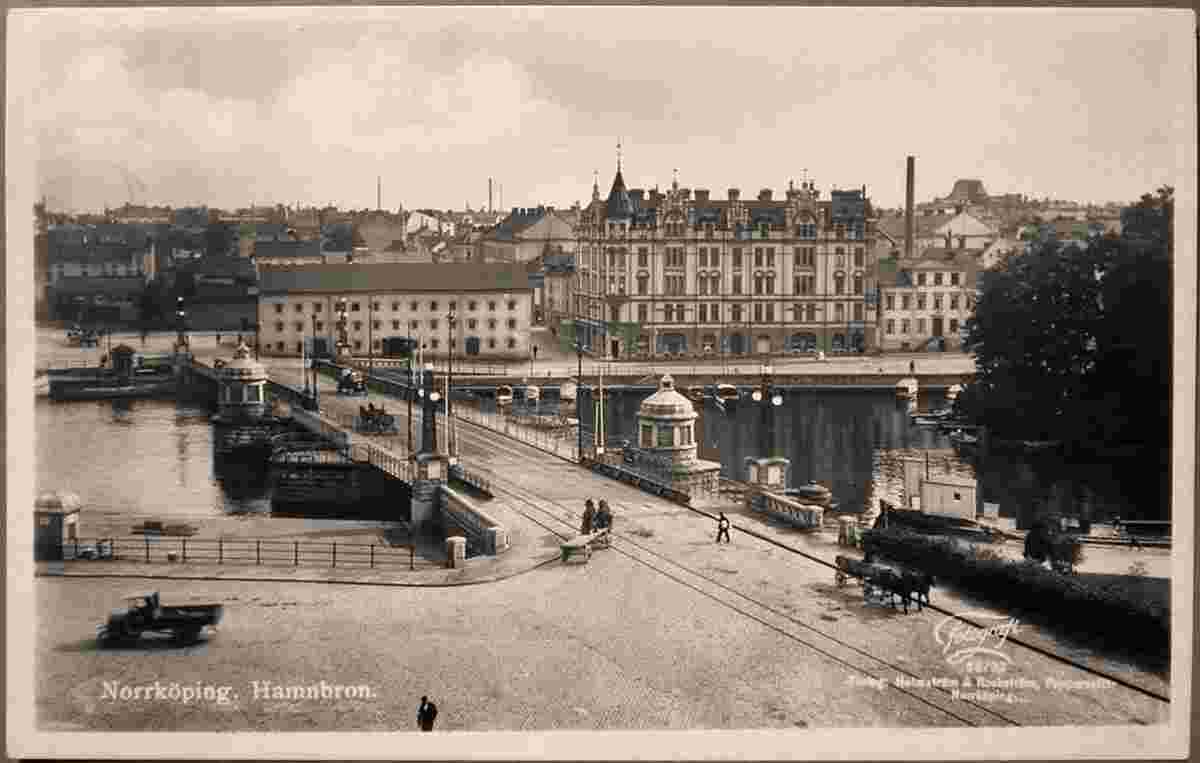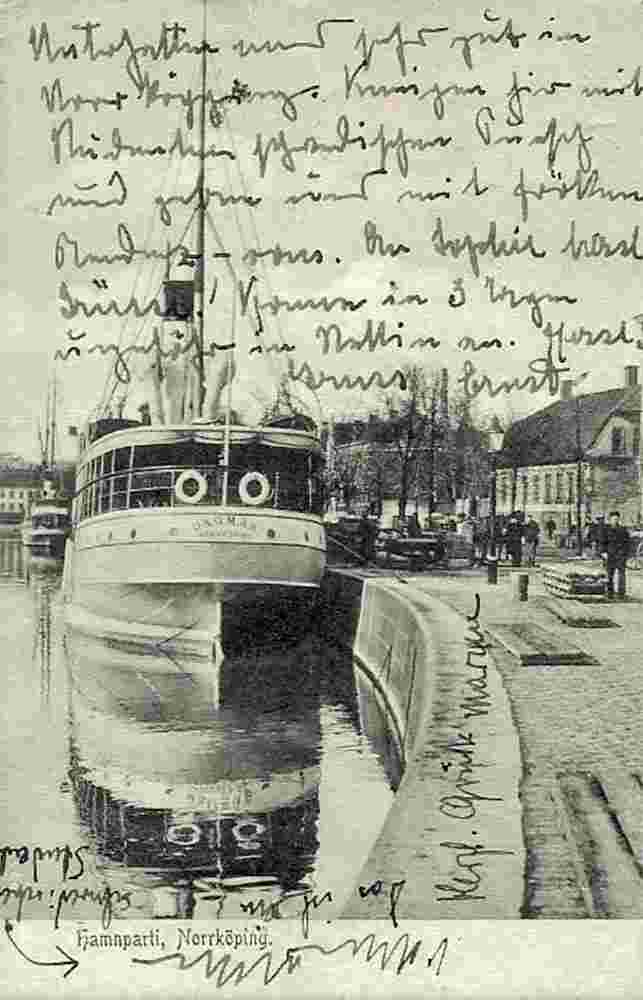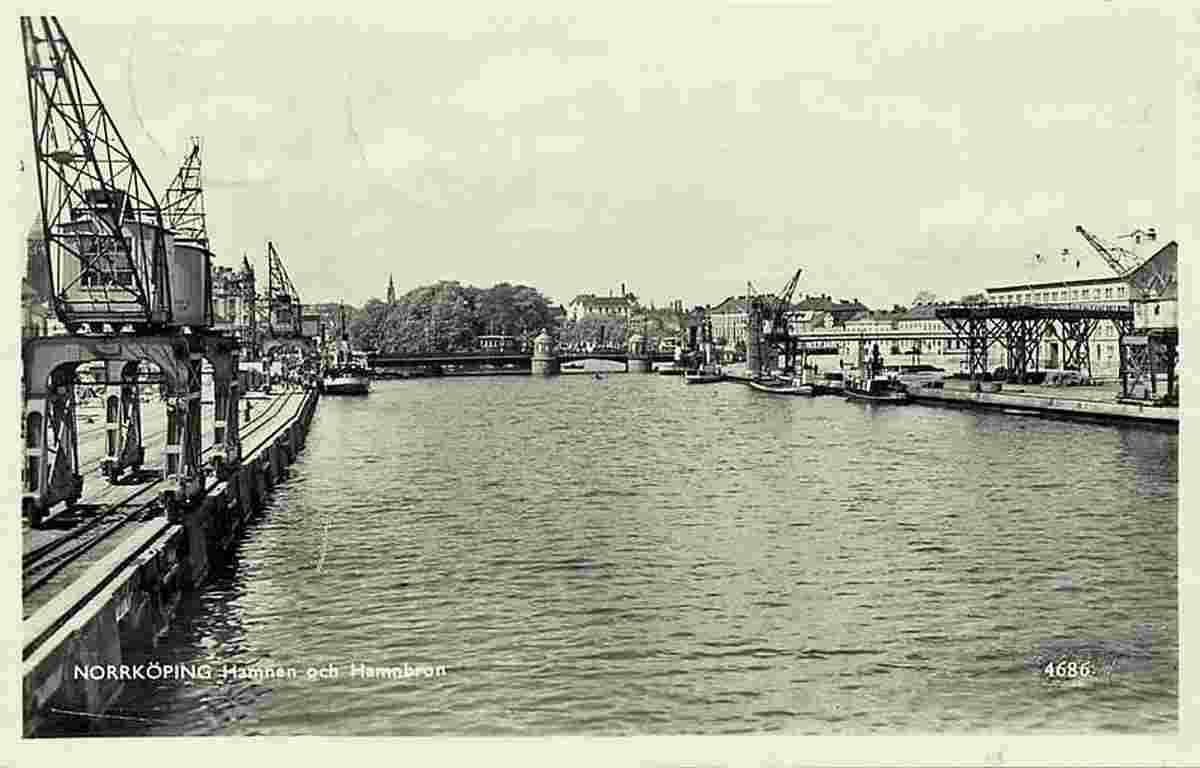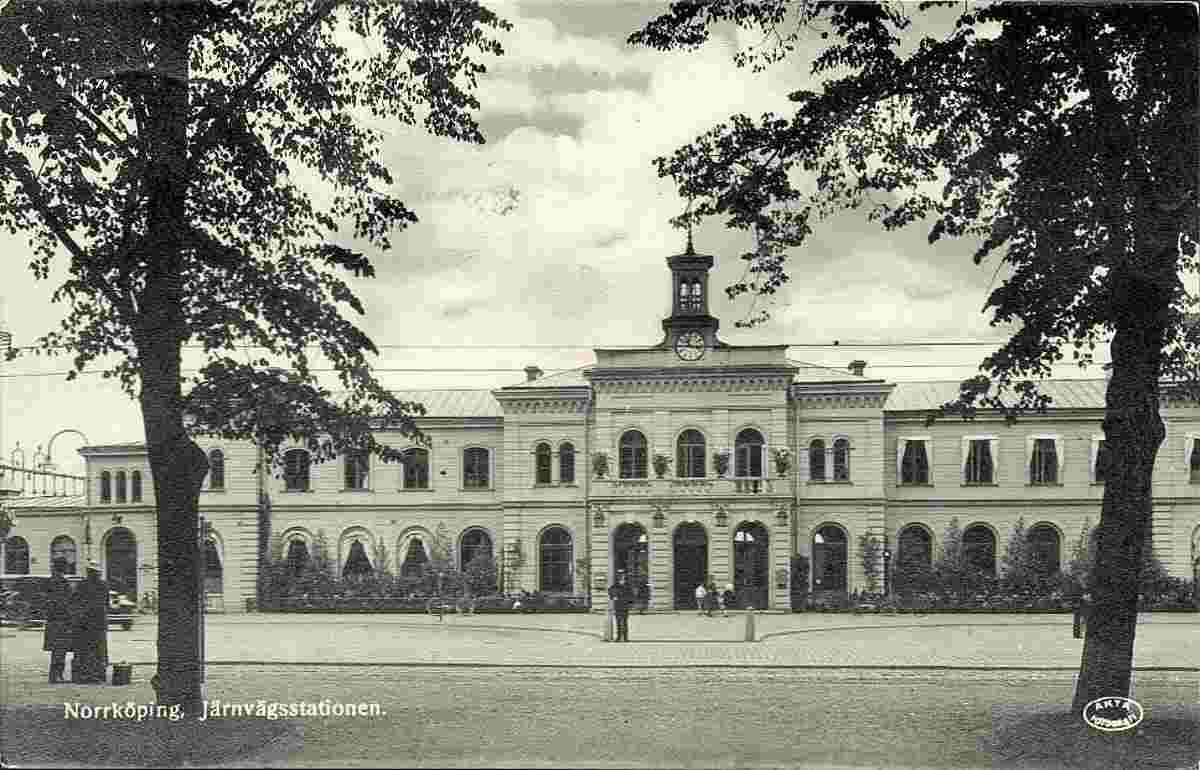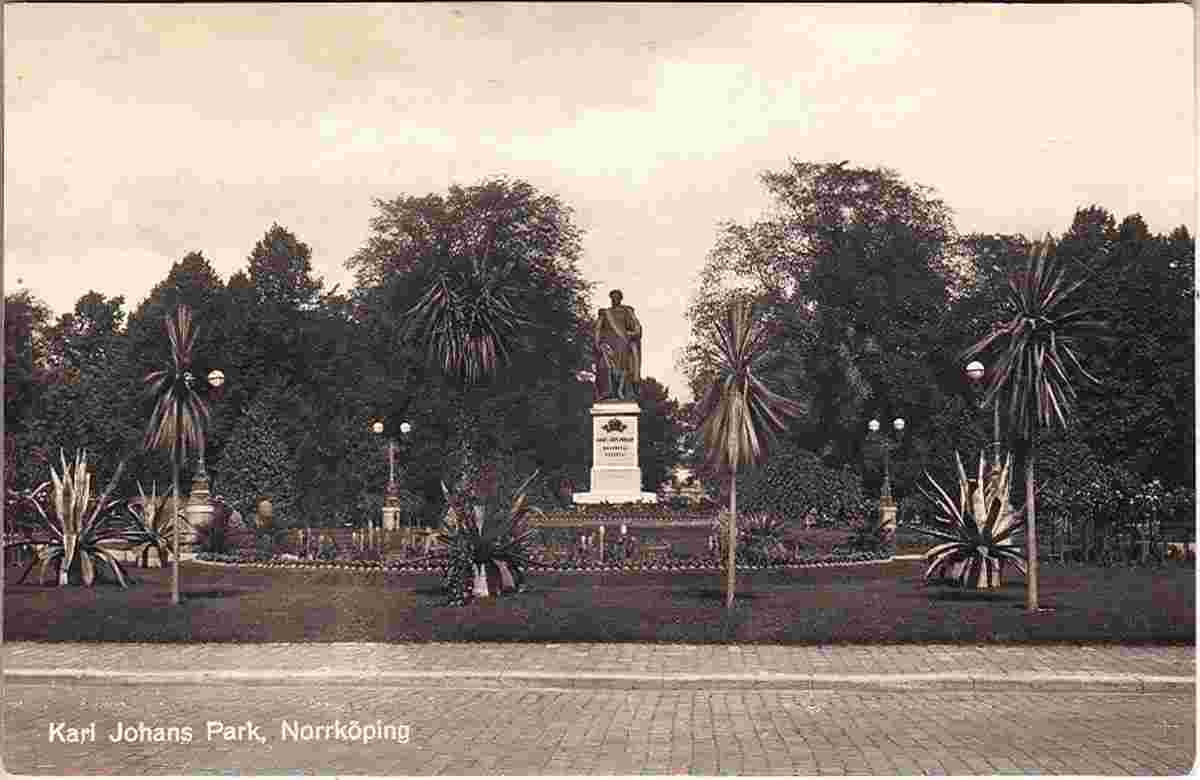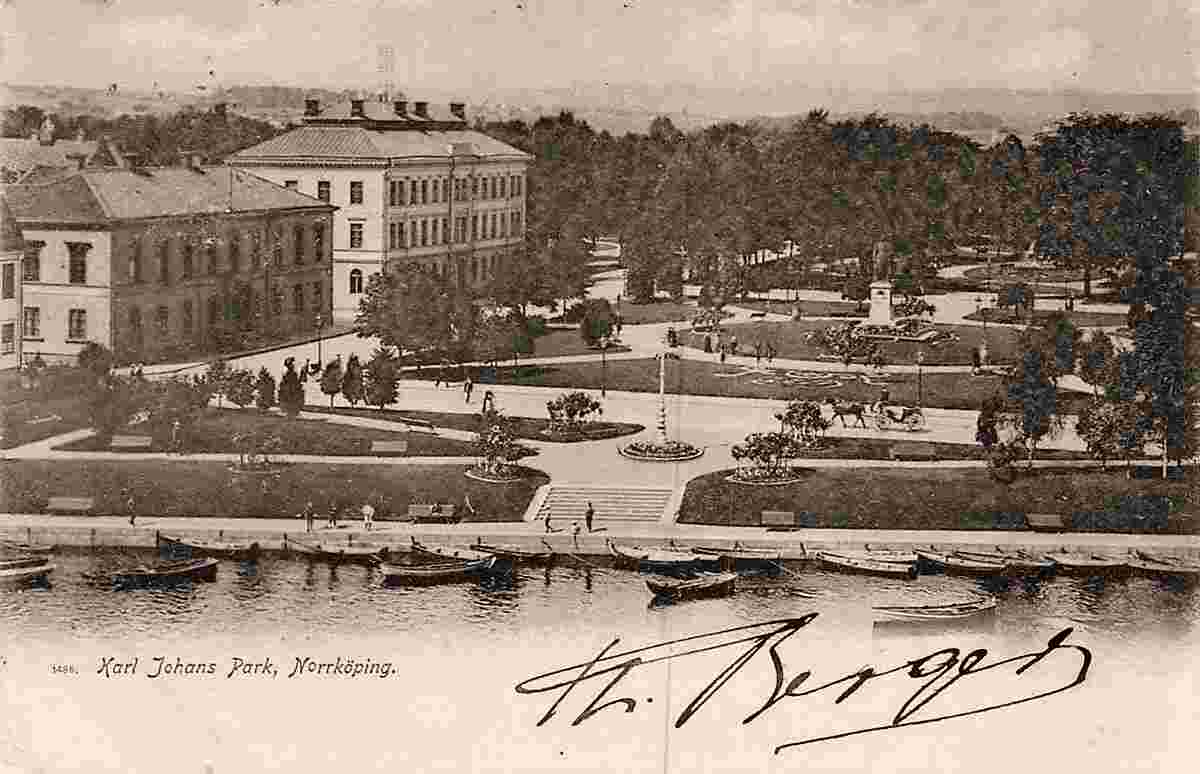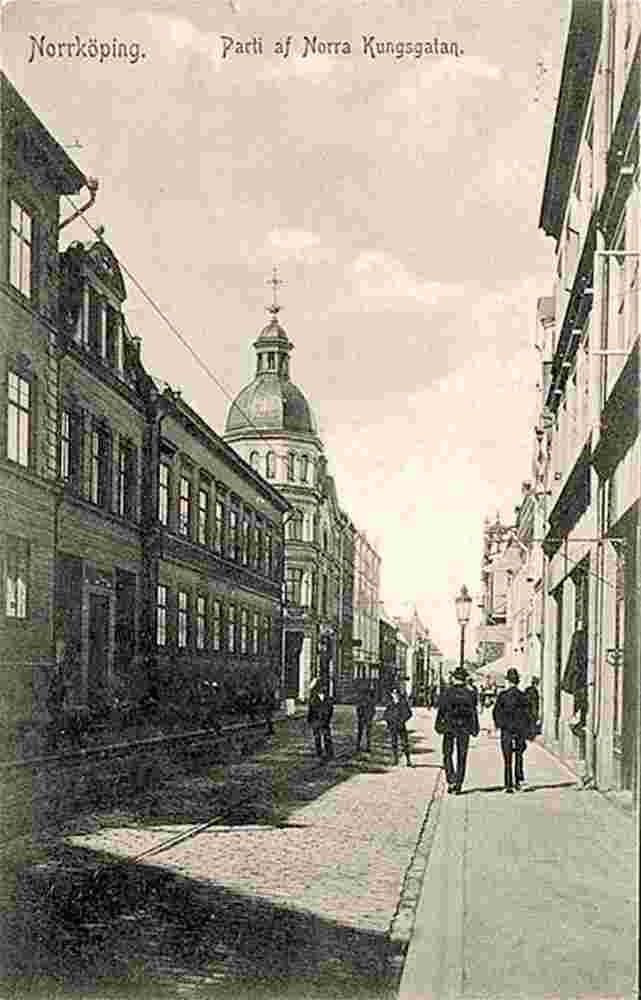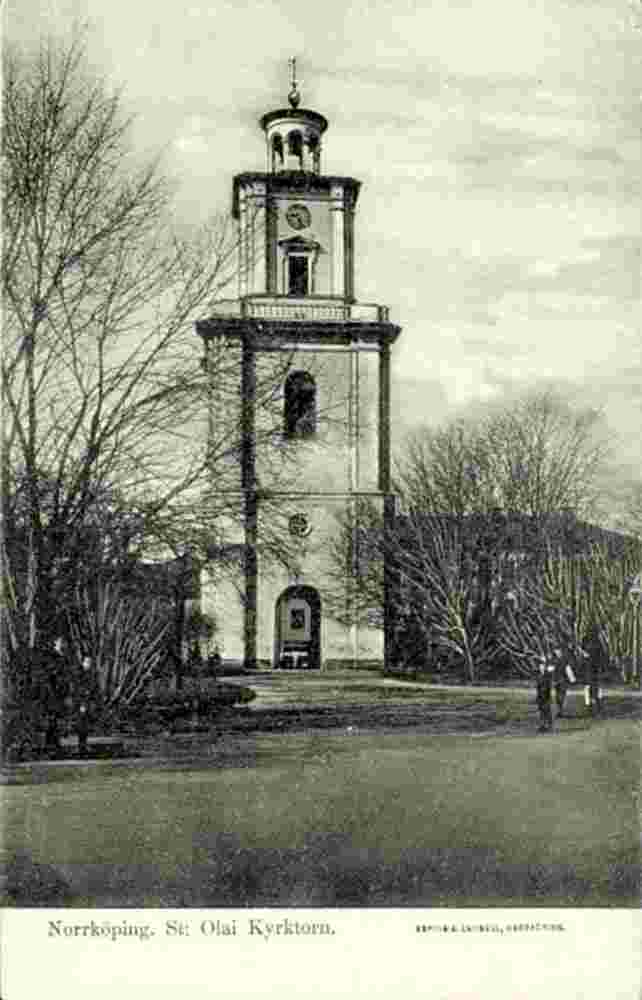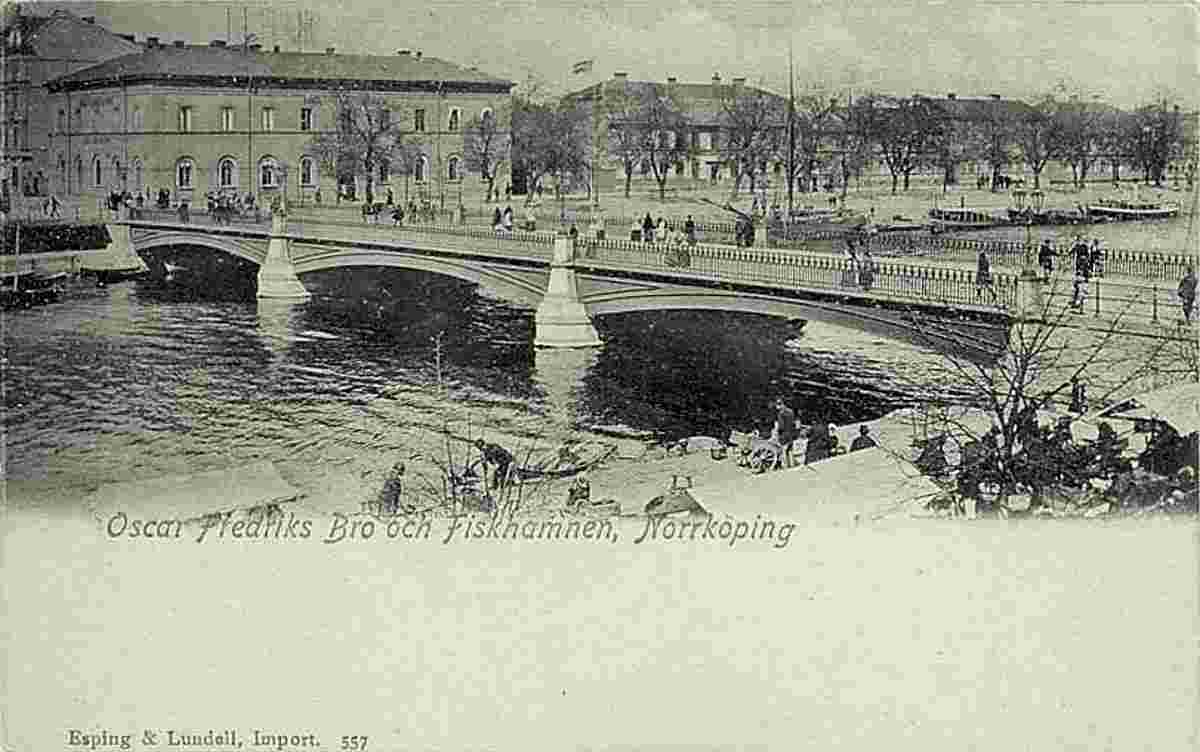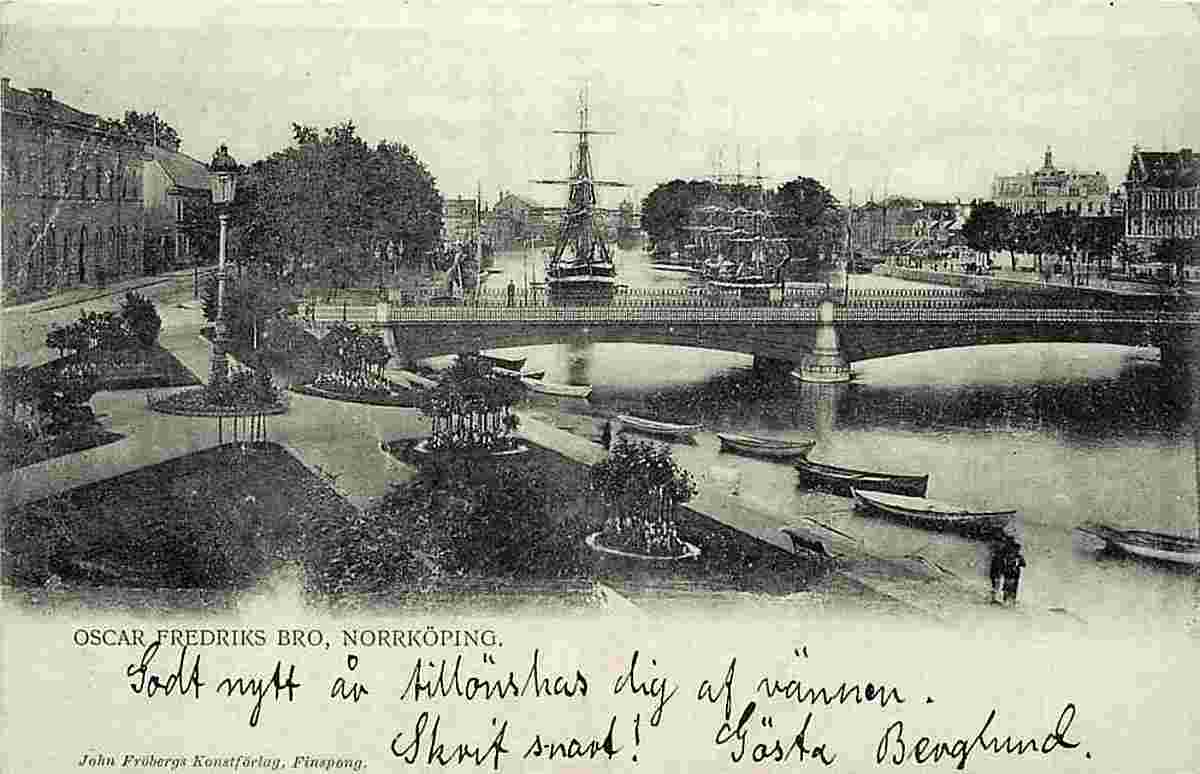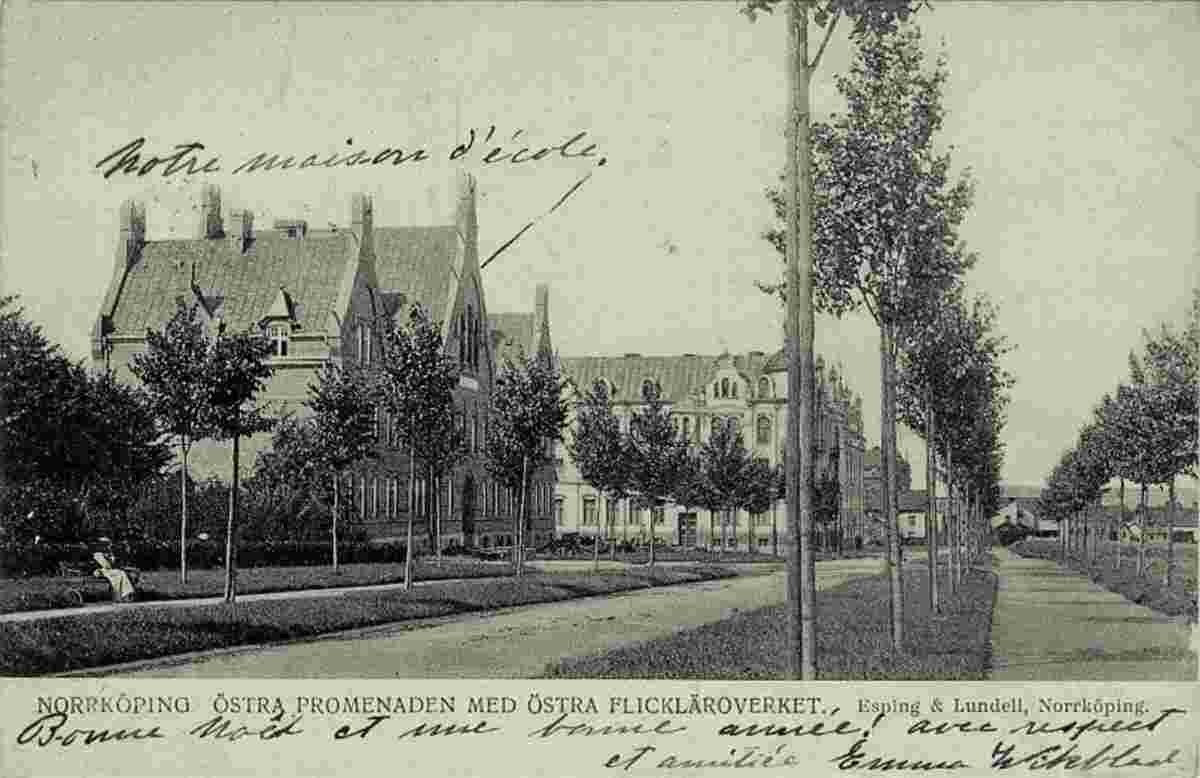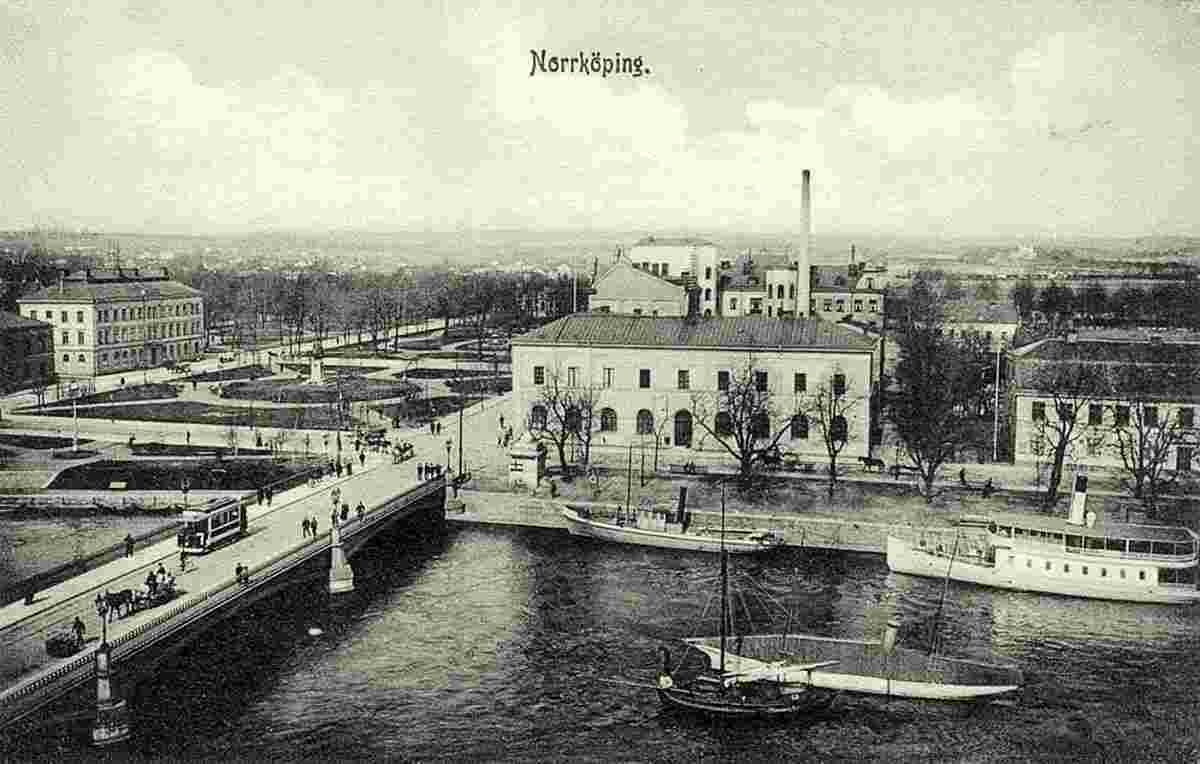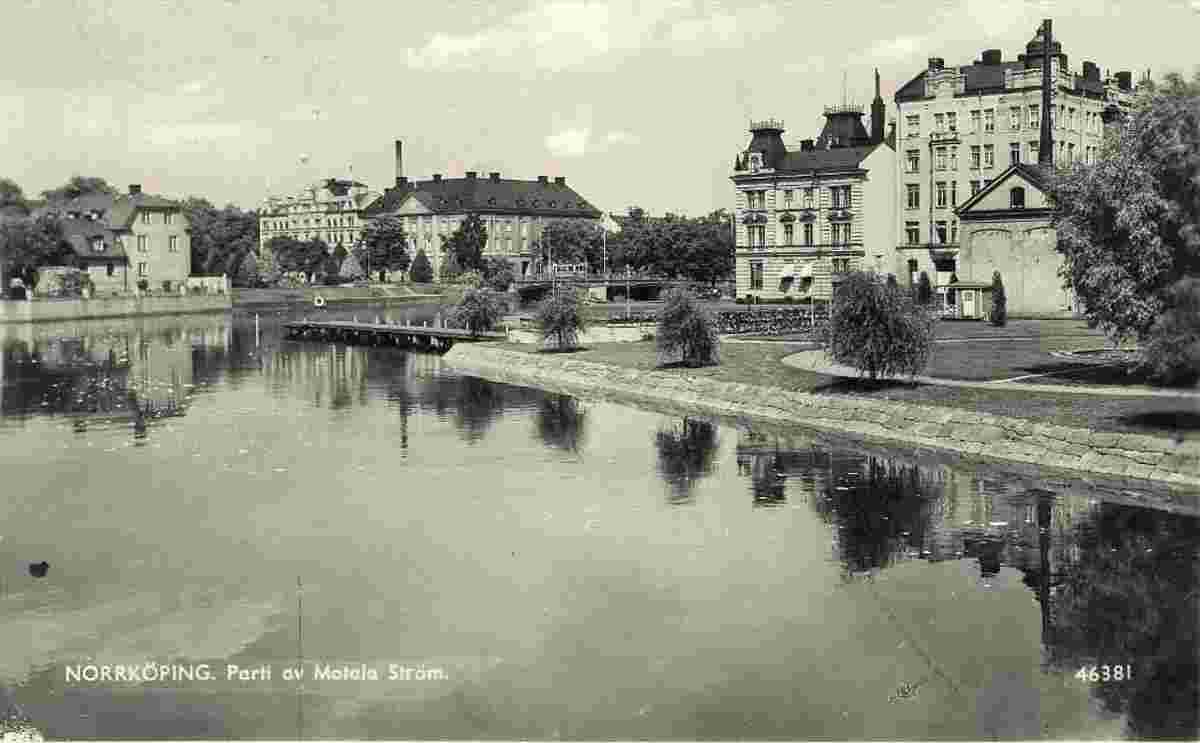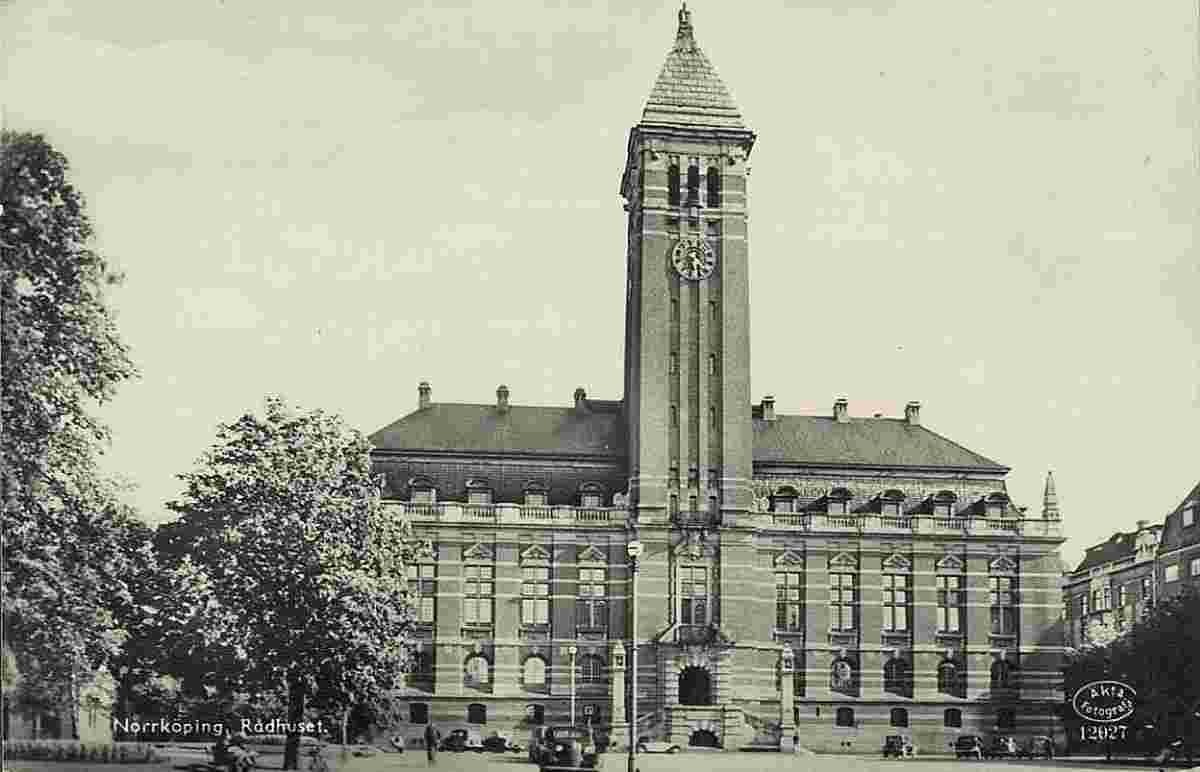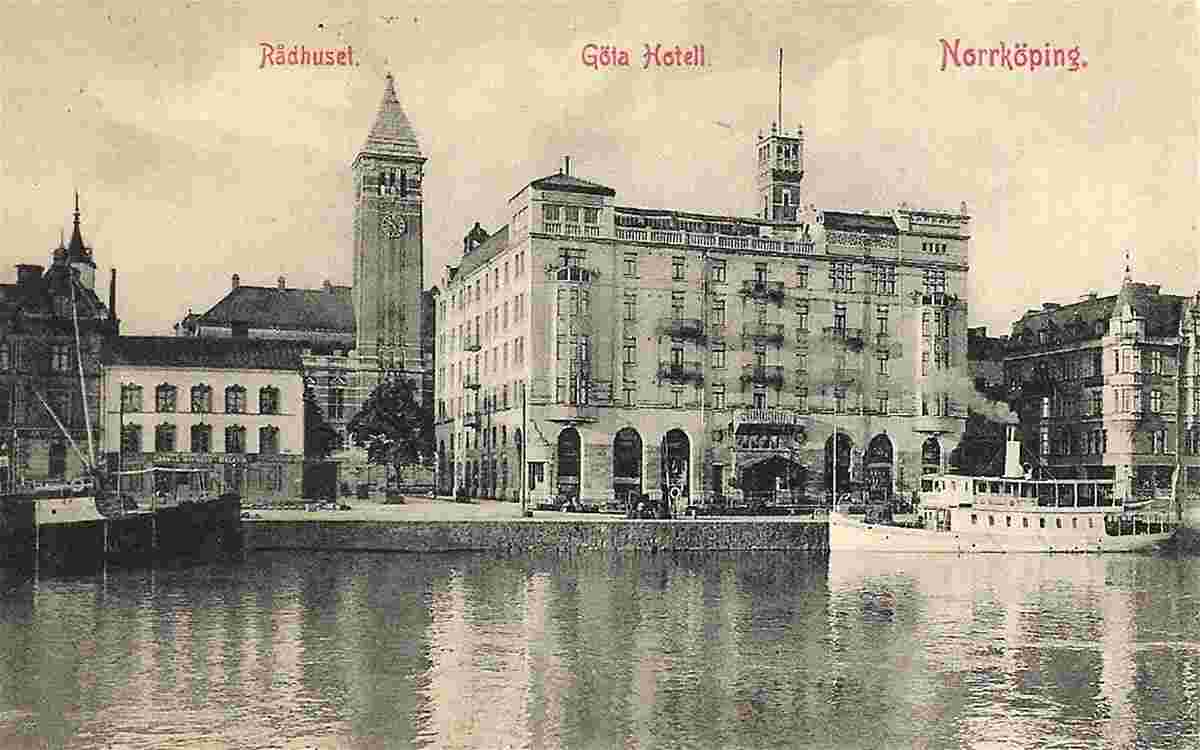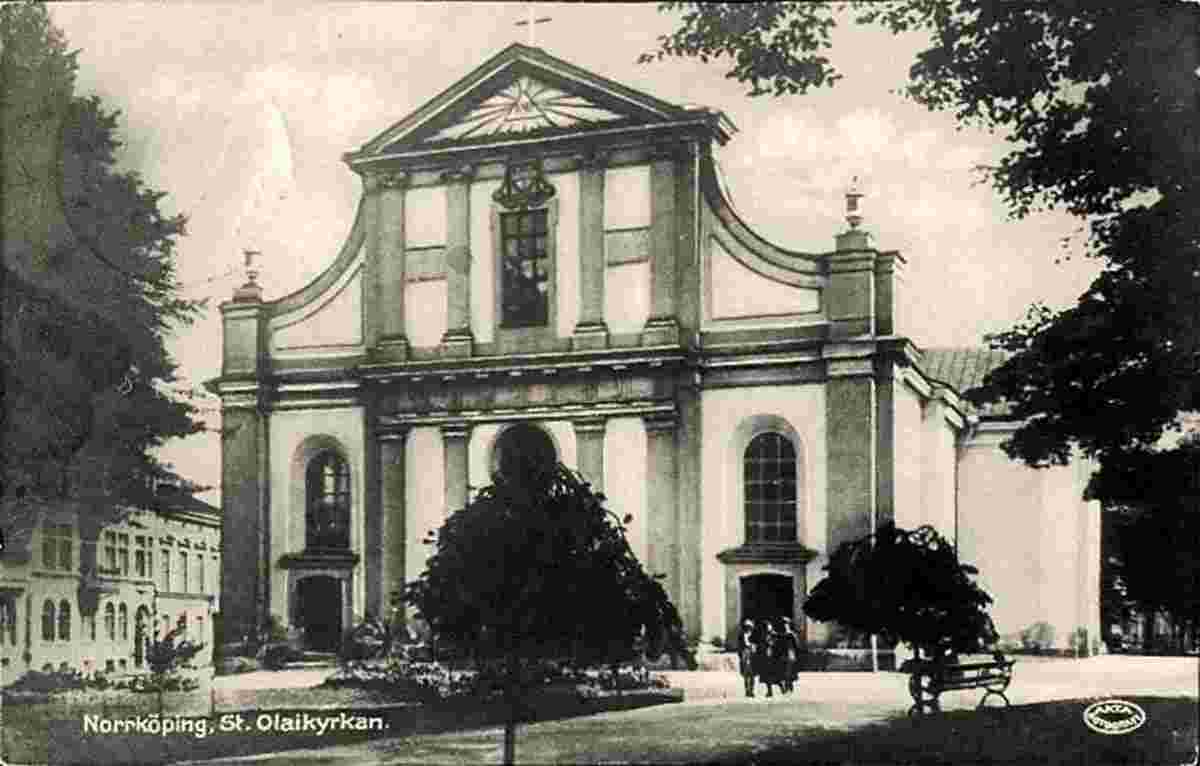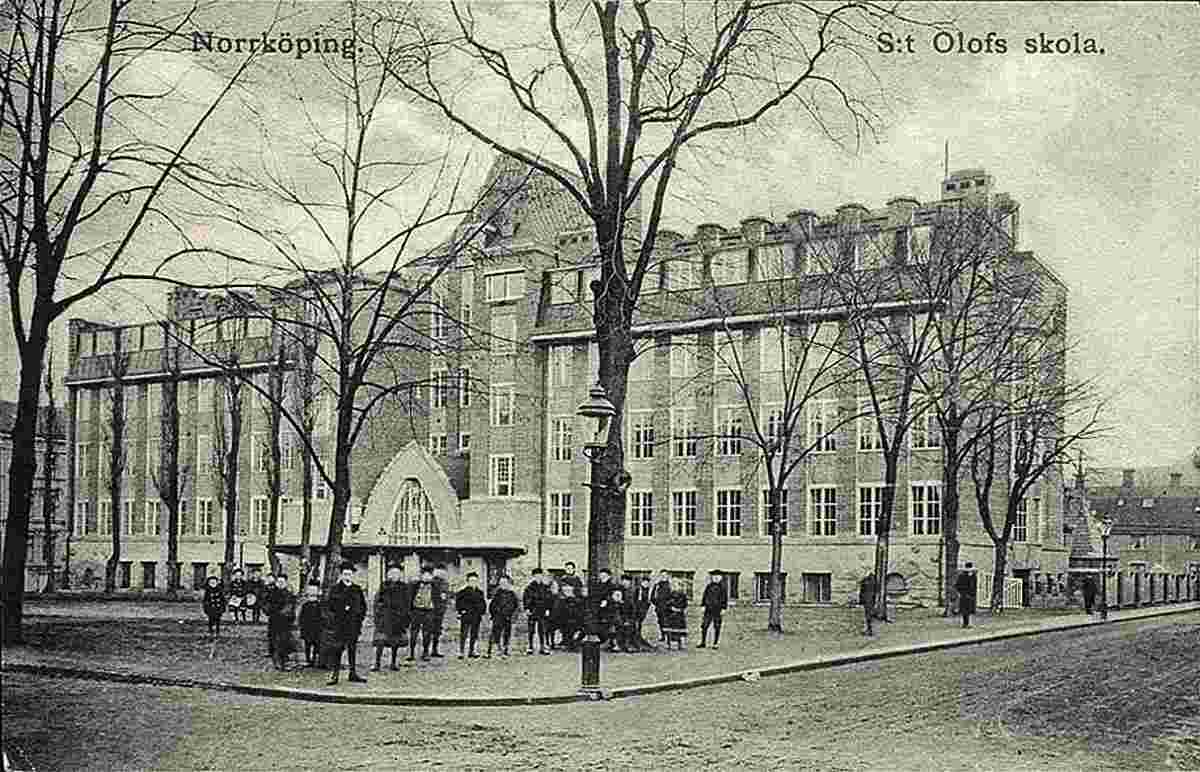Historical and old photos of Norrköping, Östergötland
HistoryThe city has medieval foundations by settlers around the Motala stream estuary, who used the falls and rapids to power their mills. The stream was also full of fish such as salmon. Exact dates are uncertain, but there are mentions of a church in the 12th century. It was dedicated to Saint Olaf, Norway's patron. The first trace of the city's name is from 1283, when Sophia of Denmark donated her rights of salmon fishing to the Skänninge monastery. The town is estimated to have received city status in the early 14th century, although no written documents exist prior to a document from 1384. This document, signed by Albrekt of Sweden is stored in the city archive today. Köping means there was a market there, while Nörr or Norr means "north". There is a smaller town nearby named Söderköping, or "South market". The city was the location of several battles in the ensuing centuries. As a consequence, nothing of the medieval Norrköping remains today. During the Northern Seven Years' War (1563–1570), the entire southern part of Norrköping was burnt. It was rebuilt by John III of Sweden, who designed the current street pattern. In 1618, a weapon industry was established by supervision of Gustavus Adolphus. The harbour also attracted ships due to its proximity to the industries of Finspång. In addition to the weapon industry, a large scale industry of textile was also initiated. An important benefactor was the industrial man Louis De Geer (1587–1652). At De Geer's death, Norrköping had 6,000 inhabitants and was Sweden's second largest city. The city again burnt in 1655, and again in 1719 during the Russian Pillage of 1719-21 when the Russians burnt it to the ground. Stones from the Johannisborg castle were used to build new houses, and today only a few stones remain. During the 18th century it was rebuilt and several industries soon got a stronghold: In the 1740s, Norrköping boasted three sugar refineries; in the 1750s the large scale influential snus industry was established. From this time stems the city churches of Saint Olof and Saint Hedvig, and several other old houses. In 1762, the first theater in Sweden outside of Stockholm was established in the city, the Egges Teater. Norrköping's importance again flourished. In 1769 the Swedish Riksdag assembled there. In 1800 King Gustav IV of Sweden was crowned in the Church of Saint Olof. In the later 18th and early 19th Centuries, Norrköping was one of the three Swedish cities where Jews were allowed to live (see History of the Jews in Sweden). The city again suffered fires in 1822 and 1826. Thereafter wooden houses were banned. In 1841 a ship industry was initiated as a branch of Motala Verkstad in Motala. In 1850 the industry had over 600 employees making it Sweden's largest ship industry at the time. During the remaining 19th century, the industries kept expanding. The area by the Motala Stream was developed further with the construction of a cotton refinery, and a paper mill was constructed in 1854, specializing in newspaper, and is still today exporting to customers around the world. The industry, including textile manufacturers, also expanded into the 20th century. In 1950 a total of 54 factories had 6,600 employees in town. By 1956, however, 18 of them had been closed due to competition from countries abroad with lower wages, such as Italy and Japan. In 1970 only 10 factories and 1,200 employees remained. In that year, the renowned Holmen paper mill, with its 350 years long history, announced closure, and another 900 people were let go. To counter the effects, several governmental authorities were relocated to Norrköping from Stockholm. See also Braviken Paper Mill. As of 2002, Norrköping is now seeing a revival, as a center of culture and education. The Norrköping symbol represents the "new" Norrköping. Origin: en.wikipedia.org | ||||||||||||
 |
Historical and old photos of Norrköping, Östergötland
Historiska och gamla bilder från Norrköping, Östergötland |
| Main page • Countries of Europa • Cities of Sweden |
| Robinson Rd, CB 13862 Nassau, NP, The Bahamas |
